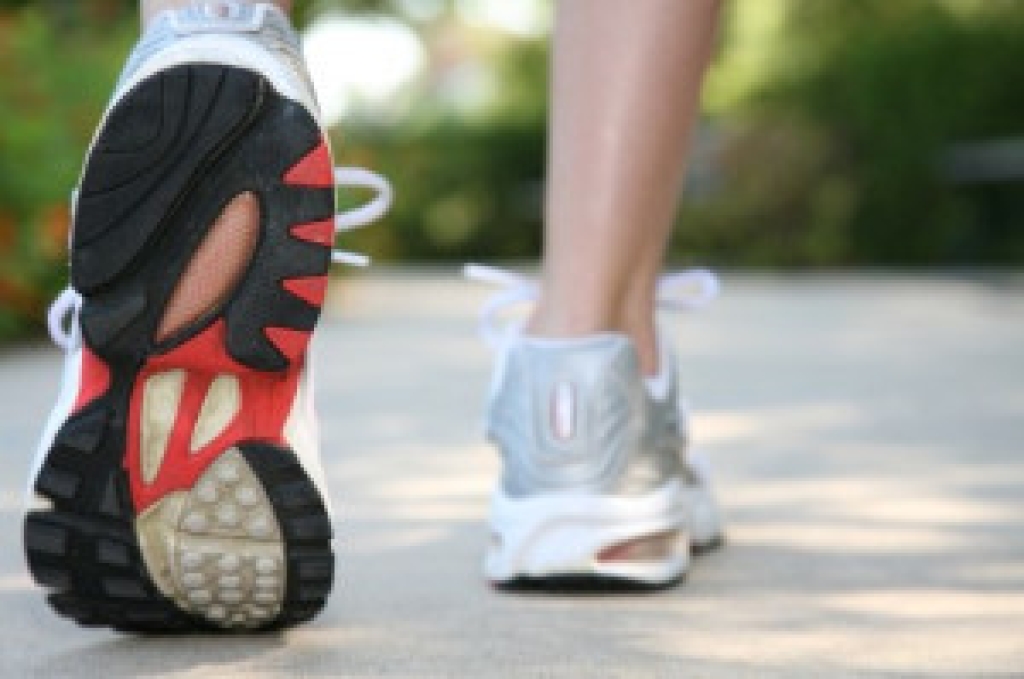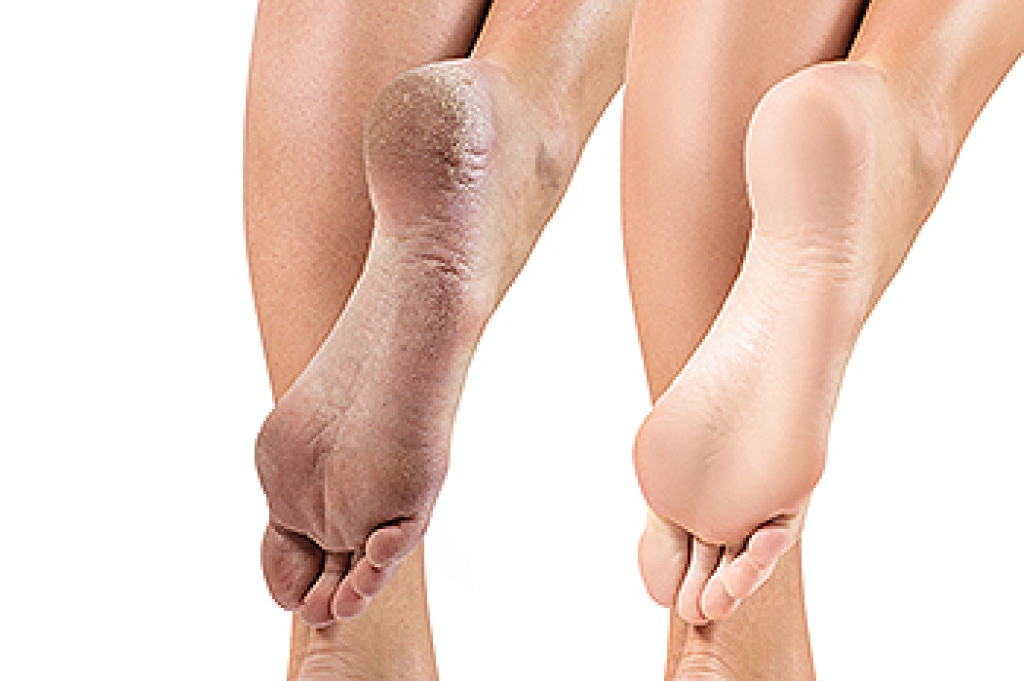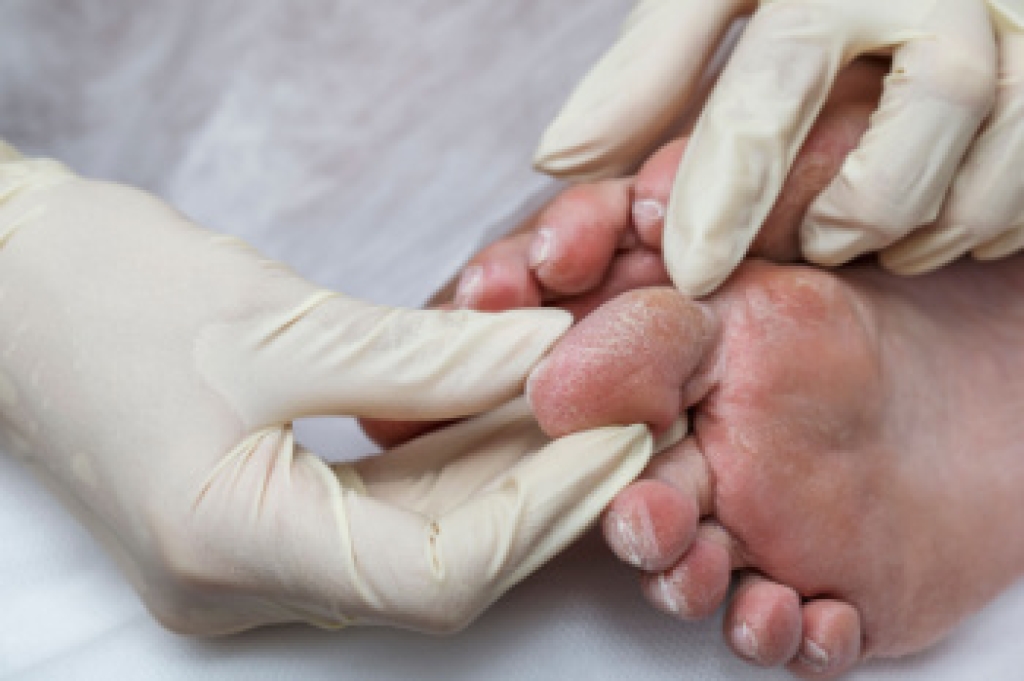Connect With Us
Blog
Blog
What Are Orthotics?
 Orthotics are defined as insoles that fit inside the shoe. They are designed to correct abnormal foot structures that can come from genetic traits, or from wearing shoes that do not fit correctly. Orthotics are helpful in supporting fallen arches, and can successfully distribute weight evenly throughout the foot. To ensure a proper fit, your foot is placed into a mold so that the exact size and shape of your foot can be determined. After the orthotics are constructed, a final fitting is done before being placed inside the shoe. Many patients realize the benefits of wearing orthotics, and it is suggested that you seek the counsel of a podiatrist who can properly fit you with these types of insoles.
Orthotics are defined as insoles that fit inside the shoe. They are designed to correct abnormal foot structures that can come from genetic traits, or from wearing shoes that do not fit correctly. Orthotics are helpful in supporting fallen arches, and can successfully distribute weight evenly throughout the foot. To ensure a proper fit, your foot is placed into a mold so that the exact size and shape of your foot can be determined. After the orthotics are constructed, a final fitting is done before being placed inside the shoe. Many patients realize the benefits of wearing orthotics, and it is suggested that you seek the counsel of a podiatrist who can properly fit you with these types of insoles.
If you are having discomfort in your feet and would like to try orthotics, contact Emil Babayev, DPM from New York. Our doctor can provide the care you need to keep you pain-free and on your feet.
What Are Orthotics?
Orthotics are inserts you can place into your shoes to help with a variety of foot problems such as flat feet or foot pain. Orthotics provide relief and comfort for minor foot and heel pain but can’t correct serious biomechanical problems in your feet.
Over-the-Counter Inserts
Orthotics come in a wide variety of over-the-counter inserts that are used to treat foot pain, heel pain, and minor problems. For example, arch supports can be inserted into your shoes to help correct overarched or flat feet, while gel insoles are often used because they provide comfort and relief from foot and heel pain by alleviating pressure.
Prescription Orthotics
If over-the-counter inserts don’t work for you or if you have a more severe foot concern, it is possible to have your podiatrist prescribe custom orthotics. These high-quality inserts are designed to treat problems such as abnormal motion, plantar fasciitis, and severe forms of heel pain. They can even be used to help patients suffering from diabetes by treating foot ulcers and painful calluses and are usually molded to your feet individually, which allows them to provide full support and comfort.
If you are experiencing minor to severe foot or heel pain, it’s recommended to speak with your podiatrist about the possibilities of using orthotics. A podiatrist can determine which type of orthotic is right for you and allow you to take the first steps towards being pain-free.
If you have any questions, please feel free to contact our offices located in Midwood and Kensington in Brooklyn, NY . We offer the newest diagnostic and treatment technologies for all your foot care needs.
Choosing the Best Running Shoe for Comfort and Performance

Choosing the right running shoe can prevent discomfort and support your training goals. Many runners benefit from selecting a shoe that is a half size or even a full size larger than their regular shoes to allow room for swelling and natural foot movement. It is important to know your running goals, whether you want support for long distances or speed for short runs. Look for materials that enhance comfort such as air pockets for cushioning, foam for softness, and gel for shock absorption. Additionally, replace your shoes regularly to maintain proper support. A podiatrist can assess your foot type, gait, and training needs to recommend the right shoe. If you have foot or ankle pain from wearing the wrong shoes, it is suggested that you consult a podiatrist who can treat various foot conditions, and guide you on additional tips in choosing the right running shoe for your goals.
For more information about walking shoes versus running shoes, consult with Emil Babayev, DPM from New York. Our doctor can measure your feet to determine what your needs are and help you find an appropriate pair of footwear.
Foot Health: The Differences between Walking & Running Shoes
There are great ways to stay in shape: running and walking are two great exercises to a healthy lifestyle. It is important to know that running shoes and walking shoes are not interchangeable. There is a key difference on how the feet hit the ground when someone is running or walking. This is why one should be aware that a shoe is designed differently for each activity.
You may be asking yourself what the real differences are between walking and running shoes and the answers may shock you.
Differences
Walking doesn’t involve as much stress or impact on the feet as running does. However, this doesn’t mean that you should be any less prepared. When you’re walking, you land on your heels and have your foot roll forward. This rolling motion requires additional support to the feet.
Flexibility – Walking shoes are designed to have soft, flexible soles. This allows the walker to push off easily with each step.
If you have any questions, please feel free to contact our offices located in Midwood and Kensington in Brooklyn, NY . We offer the newest diagnostic and treatment technologies for all your foot care needs.
What Causes Cracked Heels?

Cracked heels occur when the skin on the heels becomes dry, thick, and splits, often causing pain or bleeding. Common causes include walking barefoot, wearing open back shoes, using harsh soaps, vitamin deficiencies, in addition to fungal infections, or underlying conditions such as thyroid disorders. These factors can weaken the skin’s natural barrier, leading to rough and painful fissures. Proper foot care is essential to restore moisture and prevent infection. A podiatrist can evaluate the cause, remove thickened skin safely, and recommend treatments such as moisturizing creams or custom orthotics. Do not ignore painful or unsightly cracks on your heels as they can become worse, possibly leading to an infection. If you have this condition, it is suggested that you schedule an appointment with a podiatrist who can offer effective treatment solutions, which may include prescribed medication.
Cracked heels are unsightly and can cause further damage to your shoes and feet. If you have any concerns, contact Emil Babayev, DPM from New York. Our doctor can provide the care you need to keep you pain-free and on your feet.
Cracked Heels
Cracked heels appear unappealing and can make it harder for you walk around in sandals. Aside from looking unpleasant, cracked heels can also tear stockings, socks, and wear out your shoes. There are several methods to help restore a cracked heel and prevent further damage.
How Do You Get Them?
Dry skin is the number one culprit in creating cracked heels. Many athletes, walkers, joggers, and even swimmers suffer from cracked heels. Age and skin oil production play a role to getting cracked heels as well.
Promote Healing
Over the counter medicines can help, especially for those that need instant relief or who suffer from chronic dry feet.
Wear Socks – Wearing socks with medicated creams helps lock in moisture.
Moisturizers – Applying both day and night will help alleviate dryness which causes cracking.
Pumice Stones – These exfoliate and remove dead skin, which allows for smoother moisturizer application and better absorption into the skin.
Change in Diet
Eating healthy with a well-balanced diet will give the skin a fresh and radiant look. Your body responds to the kinds of food you ingest. Omega-3 fatty acids and zinc supplements can also revitalize skin tissue.
Most importantly, seek professional help if unsure how to proceed in treating cracked heels. A podiatrist will help you with any questions or information needed.
If you have any questions, please feel free to contact our offices located in Midwood and Kensington in Brooklyn, NY . We offer the newest diagnostic and treatment technologies for all your foot care needs.
How Diabetes Affects the Nerves in Your Feet

Diabetes can quietly damage the nerves that allow you to feel sensations in your feet, a condition known as diabetic neuropathy. When blood sugar levels remain high for long periods of time, the tiny blood vessels that nourish the nerves become weakened. Over time, this limits circulation and causes the nerves to lose their ability to send signals properly. Many people first notice tingling, burning, or numbness in their toes or soles, which can lead to unnoticed injuries or sores. Without early care, these wounds may become infected and difficult to heal. A podiatrist can help manage diabetic neuropathy by checking for changes in sensation, recommending protective footwear, and advising on daily foot inspections. If you have diabetes, it is suggested that you are under the care of a podiatrist who can prevent nerve-related complications and maintain foot health.
Diabetic foot care is important in preventing foot ailments such as ulcers. If you are suffering from diabetes or have any other concerns about your feet, contact Emil Babayev, DPM from New York. Our doctor can provide the care you need to keep you pain-free and on your feet.
Diabetic Foot Care
Diabetes affects millions of people every year. The condition can damage blood vessels in many parts of the body, especially the feet. Because of this, taking care of your feet is essential if you have diabetes, and having a podiatrist help monitor your foot health is highly recommended.
The Importance of Caring for Your Feet
- Routinely inspect your feet for bruises or sores.
- Wear socks that fit your feet comfortably.
- Wear comfortable shoes that provide adequate support.
Patients with diabetes should have their doctor monitor their blood levels, as blood sugar levels play such a huge role in diabetic care. Monitoring these levels on a regular basis is highly advised.
It is always best to inform your healthcare professional of any concerns you may have regarding your feet, especially for diabetic patients. Early treatment and routine foot examinations are keys to maintaining proper health, especially because severe complications can arise if proper treatment is not applied.
If you have any questions, please feel free to contact our offices located in Midwood and Kensington in Brooklyn, NY . We offer the newest diagnostic and treatment technologies for all your foot care needs.
Blog Archives
- 2025
- 2024
- 2023
- 2022

